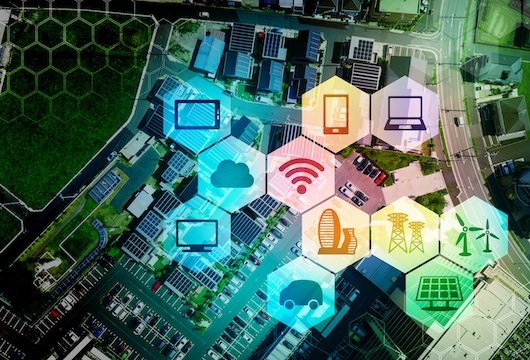
There are plenty of IoT use cases that can be enabled using unlicensed wireless technologies like Wi-Fi or LoRa – but what if you combined both of them together?
That’s the scenario explored in a new report from the Wireless Broadband Alliance (WBA) and the LoRa Alliance that claims a wealth of new IoT use cases and business opportunities can be realized for mobile operators, enterprises, cities and other IoT market players by merging the two technologies.
Wi-Fi networks are traditionally built to support critical IoT, while LoRaWAN networks are traditionally built to support low data rate massive IoT applications. The new white paper – co-written by members of the WBA IoT Work Group and the LoRa Alliance – addresses the growing popularity of IoT use cases in domains that rely on connectivity spanning large areas that are able to handle a huge number of connections, ultimately driving the demand for massive IoT technologies.
Wi-Fi connectivity covers short- and medium-range use cases at high data rates and may require more power, making it the preferable technology for people-centric mains-powered applications like real-time video and Internet browsing. Meanwhile, LoRaWAN covers long-range use cases at low data rates, making it the preferable technology for low-bandwidth applications, including in hard to reach locations, such as temperature sensors in a manufacturing setting or vibration sensors in concrete.
When utilized together, the paper says, Wi-Fi and LoRaWAN networks optimize a number of IoT use cases, such as smart buildings and smart hospitality. Both technologies are already used in buildings for separate apps – Wi-Fi is used for things like security cameras and high-speed Internet, while LoRaWAN used for smoke detection, asset and vehicle tracking and room usage. The paper says the technologies could be combined for apps like accurate asset tracking and location services for indoor or near buildings, and on-demand streaming for devices with battery limitations.
Another example is residential connectivity, where Wi-Fi is used to connect personal and professional devices in homes, while LoRaWAN is used for things like home security and access control, leak detection, and fuel tank monitoring. The paper recommends deploying LoRaWANpicocells that leverage Wi-Fi backhaul to the user set top box to expand coverage of home services to the neighborhood. These “neighborhood IoT networks” could support new geolocation services, while also serving as a communication backbone for demand-response services.
The paper also outlines deployment models and provides details on frontend and backend integration and security processes, as well as several user case studies showing how these scenarios have already been successfully deployed.
WBA general manager Tiago Rodrigues says the paper “highlights the ways in which these technologies are impacting private-public business models and enabling IoT services, while also identifying ways in which the technologies complement one another and can be used to further expand the Internet of Things.”
Donna Moore, CEO and chairwoman of the LoRa Alliance, added that mixing Wi-Fi and LoRa makes sense because in reality no one single technology is going to fit every IoT use case.
“It is collaborative initiatives like this one with Wi-Fi that will drive innovation to solve important issues, leverage an even broader range of applications and, ultimately, ensure the success of global mass IoT deployments in the future,” Moore said.

Be the first to comment